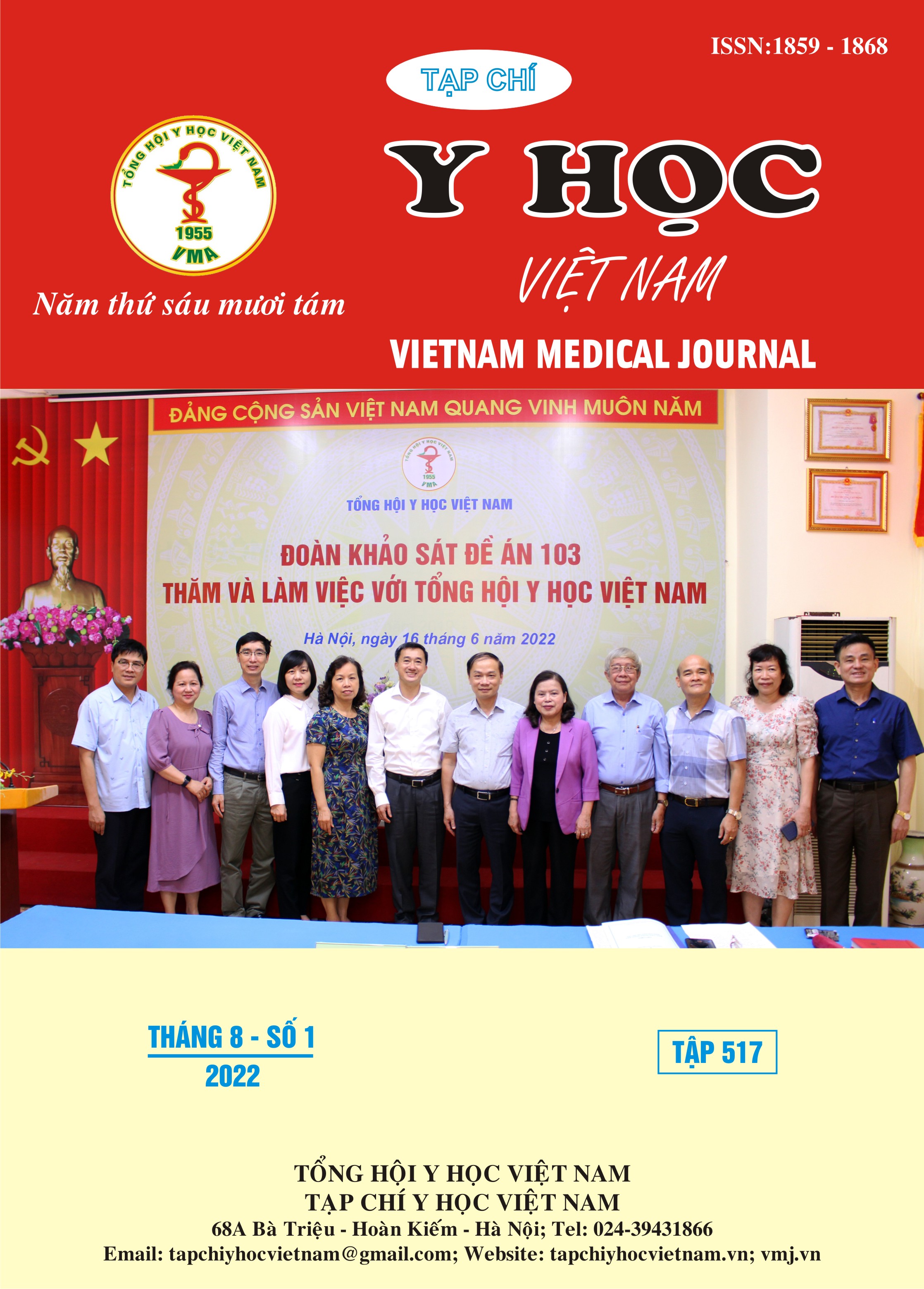ANTIBIOTIC USE IN THE TREATMENT OF URINARY TRACT INFECTION AT UROLOGY DEPARTMENT, UNIVERSITY MEDICAL CENTER HOCHIMINH CITY
Main Article Content
Abstract
Introduction: Urinary tract infection (UTI) was considered to be one of the most common bacterial infections. The increase in antibiotic resistance and inappropriate use of antibiotics in the treatment of UTI have been reported worldwide. Objectives: To investigate types and resistance rates of pathogens that caused UTI, antibiotic use and factors associated with duration of treatment among patients diagnosed with UTI at Urology Department, University Medical Center Hochiminh City (UMC HCMC). Materials and methods: A descriptive cross-sectional study was conducted on 151 medical records diagnosed with UTI from October 2020 to March 2021 at Urology Department, UMC HCMC. Medical records of patients were reviewed for data analysis including demographics, results of laboratory tests, antimicrobial susceptibility and indicated antibiotics. Results: Gram – negative bacteria accounted for 81.1%, of which Escherichia coli (E. coli) was the most common bacteria (43.4%). E. coli isolates showed high rates of susceptibility to amikacin, carbapenem, cefoperazone/ sulbactam, piperacillin/tazobactam and fosfomycin (> 91%) and lower rates of susceptibility to levofloxacin and TMP/SMX (43.5%). Fosfomycin and ertapenem were the most common empirical antibiotics observed. Approximately 54.5% of empiric antibiotics were assessed as appropriate according to UTI treatment guidelines. Age, diabetes mellitus and the identification of pathogens from microbiological test were positively related to patients’ length of hospital stay in the study population (p < 0.05). Conclusion: Results from the study suggested the implementation of updating pathogens’ resistance and adherence to treatment guidelines of UTI in clinical settings.
Article Details
Keywords
antibiotic, urinary tract infection (UTI), E. coli
References
2. Vũ Thị Thúy An, Nguyễn Thanh Hải, Trần Quỳnh Như và cs. (2020), "Khảo sát việc sử dụng kháng sinh trong điều trị nhiễm trùng đường tiết niệu tại bệnh viện Thống Nhất thành phố Hồ Chí Minh", Tạp chí Y học TP. Hồ Chí Minh. 24 (5), 15-20.
3. Lê Đình Khánh, Lê Đình Đạm, Nguyễn Khoa Hùng và cs. (2018), "Tình hình nhiễm khuẩn đường tiết niệu tại khoa ngoại tiết niệu Bệnh viện Trường Đại học Y Dược Huế", Tạp chí Y Dược học - Trường Đại học Y Dược Huế. 8 (3), 100-108.
4. Phạm Thế Anh, Nguyễn Phúc Cẩm Hoàng, Ngô Xuân Thái (2019), "Đánh giá kết quả chẩn đoán và điều trị nhiễm khuẩn đường tiết niệu ban đầu tại phòng khám tiết niệu bệnh viện Bình Dân", Tạp chí Y học TP. Hồ Chí Minh. 23 (3), 96-101.
5. Nguyễn Thị Thanh Tâm , Trần Thị Bích Hương (2015), "Đặc điểm lâm sàng và vi trùng học của nhiễm khuẩn đường tiết niệu phức tạp ở người trưởng thành tại bệnh viện Chợ Rẫy", Tạp chí Y học TP. Hồ Chí Minh. 19 (4), 458-465.
6. Lâm Tú Hương, Huỳnh Minh Tuấn, Trần Đăng Khoa (2021), "Đặc điểm vi khuẩn và kháng sinh đồ của bệnh nhân nhiễm khuẩn đường tiết niệu điều trị tại Khoa tiết niệu, Bệnh viện Đại học Y Dược TP. Hồ Chí Minh", Tạp chí Y học TP. Hồ Chí Minh. 25 (1), 159 - 163.
7. Alanazi M. Q. (2018), "An evaluation of community-acquired urinary tract infection and appropriateness of treatment in an emergency department in Saudi Arabia", Therapeutics clinical risk management. 14, 2363 - 2373.
8. Salman J. A., Alawi S. S., Alyusuf E. Y. (2017), "Antibiotic appropriateness for urinary tract infection in the emergency room", Bahrain Medical Bulletin. 39 (1), 38 - 42.
9. Briongos‐Figuero L., Gómez‐Traveso T., Bachiller‐Luque P. et al. (2012), "Epidemiology, risk factors and comorbidity for urinary tract infections caused by extended‐spectrum beta‐lactamase (ESBL)‐ producing enterobacteria", International journal of clinical practice. 66 (9), 891-896.


